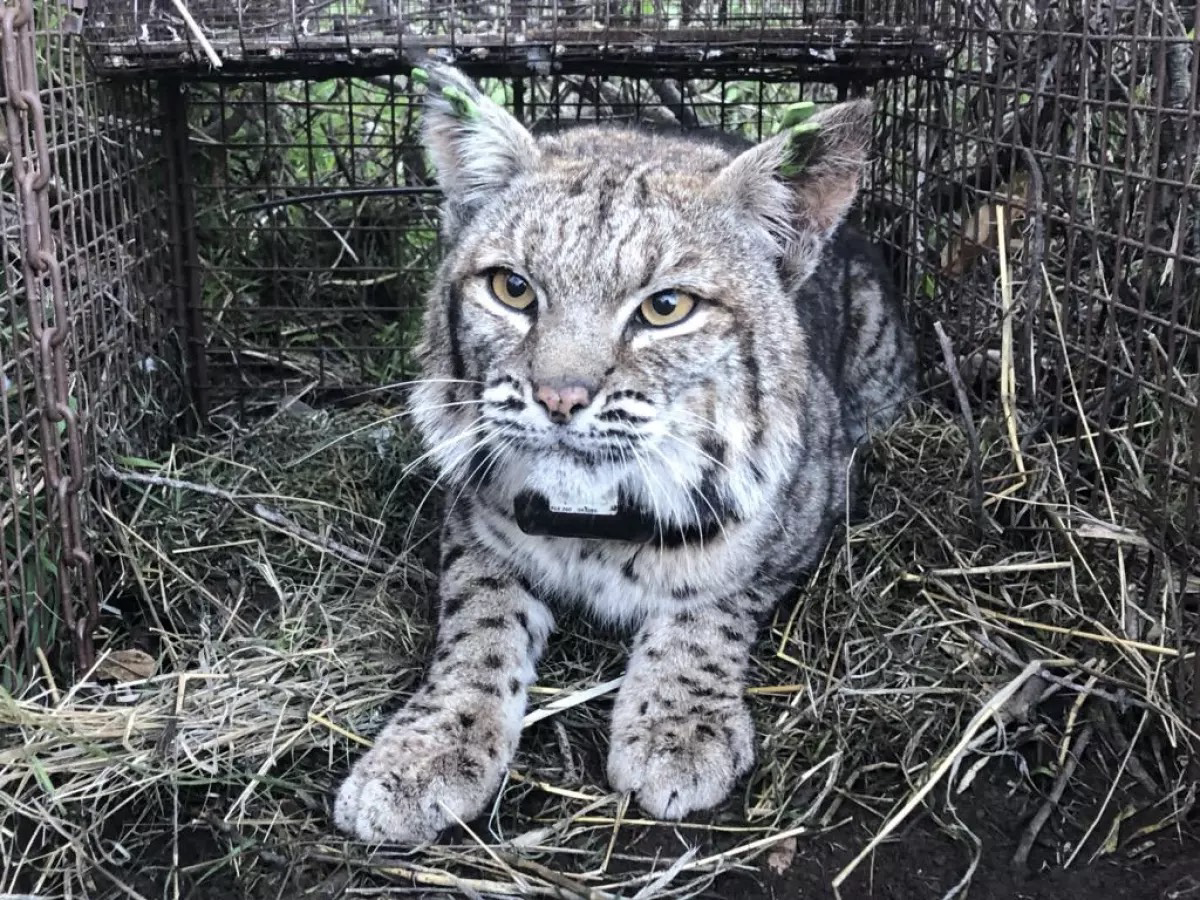BY Karen Garcia, “LOS ANGELES TIMES”
(Abridged)

The body of B-372, an adult female bobcat, was found June 20, 2020, in Agoura Hills. Officials said she died from the effects of anticoagulant rat poisons. (National Park Service)
Californian wildlife advocates are hailing the passage of Assembly Bill 1322, which expands a moratorium on rat poison, as a win for mountain lions, coyotes and other animals that live in and around urban areas across California.
The new law, also known as the California Ecosystems Protections Act of 2023, will place a moratorium on diphacinone, a first-generation anticoagulant rat poison, developed before 1970. The law will take effect Jan. 1.
Mountain lions, coyotes and other animals are often the unintended victims of the poison when they eat smaller animals, like squirrels, possum or raccoons that have consumed the rat poison. Diphacinone is often used to kill rats, squirrels and other rodents.
The new legislation is an expansion of a similar bill passed in 2020, which placed a moratorium on second-generation rodenticides, those developed after 1970.
The rat poison suppresses an animal’s immune system and can be a factor in general population decline, according to Laurel Serieys, postdoctoral scholar in environmental studies at the University of Santa Cruz in 2018.
Diphacinone has been prevalent for so long because “it kills, not just rodents, but larger animals up the food chain,” said Tony Tucci co-founder of Citizens for Los Angeles Wildlife, a Los Angeles-based nonprofit that works to restore the habitat of wildlife.
“This bill not only had strong support in the state Legislature, it also had support from local municipalities like Los Angeles County, and we are thrilled that policymakers are understanding that poisoning the predators of rodents through secondary exposure is counterproductive, killing nature’s predators in the wild will ultimately result in more rodents,” Tucci said.
Los Angeles County approved a motion earlier this year asking the state of California to ban first-generation anticoagulant rodenticides.
Rat poisoning products are readily available on the consumer market as ready-to-bait stations that contain that contain rodenticides, including diphacinone, according to the U.S. Environmental Protection Agency.
Poison Free Malibu a wildlife-protection activist group, was pleased by the passage of Assembly Bill 1322 but said there is still work to be done on other pesticides.
“We are still concerned about other poisons, which are coming to the fore now that the anticoagulants are being restricted,” said Kian and Joel Schulman, founding members of the group.
Editor’s Footnote: New Zealand’s government still uses anti-coagulant poisons such as 1080, brodifacoum and almost certainly diphacinone and others

As your editorial note points out, the NZ government shows no concern about poisons harming wildlife. To the contrary, government and DOC champion using the toxic poisons and aerially drop coagulants like 1080 and brodifacoum. Regional councils regularly use brodifacoum. Brodifacoum rat poison (e.g. Talon) are openly on sale without restrictions as to who may buy or use them.
This country has an addiction to toxins which the users believe they are saving our wildlife but are destroying it, one day we will wake up when it’s too late.
Harrier Hawks in New Zealand contain high levels of pesticides.
I refer to a scientific paper “Persistent organic pollutants in Australian harriers (Circus approximans) from New Zealand” published in 2015 by scientists at Landcare Research and Assure Quality. I quote “concentrations of DDTs, comprised primarily of p,p’-DDE, were remarkably high in Australasian harriers collected from the Canterbury Region. These concentrations are among the highest reported internationally for terrestrial birds. “. There would be few rural properties which do not use rodenticides in buildings on their properties. Domestic cats often suffer from poor health and sometimes die when they eat rats and mice which have been feeding on poison baits.
January 2015
If a private citizen forced animals to endure the pain and suffering from 1080 they would rightly be jailed, but somehow the goal of elimination trumps all ethics and morals, it’s behaviour that belongs more in a Roman Amphitheatre than modern day NZ. Surely with the advances in DNA/CRISPR etc, there are more ethical ways to target rats and mustelids alone?
I saw it, wit my eyes!
In 2009 I was in LA with an enforced free day from airline ,[you know what!].
We decided to grab a rental car & visit the famous Getty Art museum which is located out on the tip of a prominent spur extending out from the main maintain range. It’s a fabulous bit of modern architecture building.There is no parking space at the museum, being in steep country.Access is by a sort of cable car trolly for visitors, from a parking lot below.Riding up at an open window the trolly track winds up steeply through sort of scrubby semi wild dry forest. We had a good view from above & gob smacked by the number of animals running helter skelter.Rabbits hares all manner of chipmonks squirrels & especially deer. I think we saw 20 deer in a 5 minute ride.
Remember this is all within the Los Angeles Municiple boundary of 11 million people concrete & frreways,
Wildlife wise they must be doing something right & it ain’t POISON!!!
Successive governments have all been irresponsible with poison use here. It’s hard to believe that overseas meat buyers haven’t demanded poison use be stopped yet but I expect this to happen in the future. The clean green image will be exposed for all to see one day & we will pay the price.